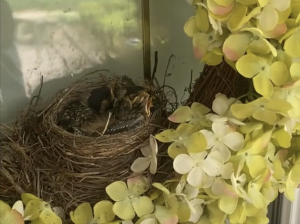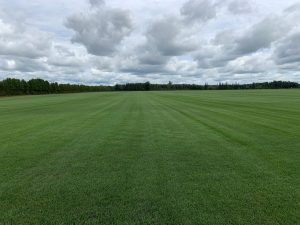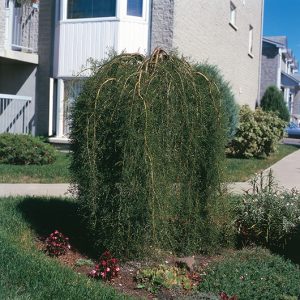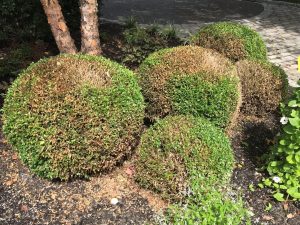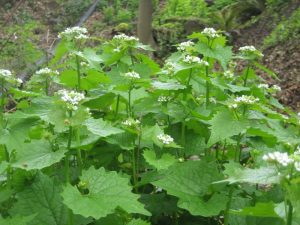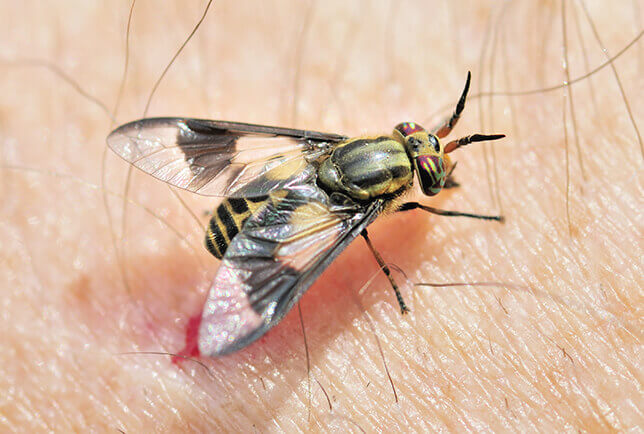
Hi, Dave here from Foxy Gardens in southwestern Ontario. If you’ve spent any time hiking, biking, or gardening in Ontario’s great outdoors, you’ve likely had the misfortune of encountering deer flies.
Here’s a situation you may have been in before…
Looks like fun! Well, these small, buzzing pests are notorious for following people relentlessly and delivering painful bites that leave behind itchy, swollen welts. But why do they seem to chase us? Are they actually targeting humans, or is something else going on?
Let’s dive into the world of deer flies, explore what makes them tick, and—most importantly—learn how to avoid becoming their next meal.
What Are Deer Flies?
Deer flies (genus Chrysops) are a type of biting fly closely related to horse flies. Here’s the dynamic duo below (deer fly on right)
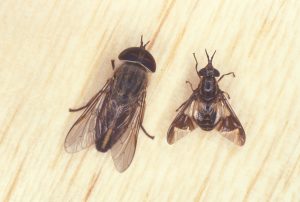
Deer flies typically measure between 6 to 10 mm in length, with distinct yellow-and-black banded bodies and iridescent or patterned wings.
Their large, brightly colored eyes give them a characteristic look. In Ontario, they are most active during the summer months, especially from June to August, with activity peaking on warm, humid days.
Unlike the larger and slower horse flies, deer flies are agile, fast, and persistent. And it’s the female deer fly you need to watch out for—she’s the one doing the biting, as she needs a blood meal to reproduce.
Do Deer Flies Actually Chase You?
It might feel like it, but deer flies don’t “chase” you in the way a predator chases prey. Their behavior is driven by instinct, not malice. What seems like a personal vendetta is really just a survival strategy: they’re tracking you because they think you’re a potential food source.
To deer flies, a moving person looks a lot like a deer, moose, or other warm-blooded mammal they’d normally feed on. And once they lock onto you as a target, they use several finely tuned senses to keep you in their sights.
Why Deer Flies Follow People
So, what exactly draws deer flies to us? There are several factors, and most of them are things we can’t easily control.
1. Movement
Deer flies are highly visual hunters. They’re especially attracted to movement, which is why people walking, running, or biking often find themselves swarmed.
To a deer fly, fast movement suggests a live host. That’s why still-standing people may be ignored, while hikers in motion become prime targets. Movement helps deer flies pick out a host from the surrounding environment.
2. Carbon Dioxide (CO₂)
Like mosquitoes, deer flies are drawn to the carbon dioxide we exhale. CO₂ acts as a homing signal, telling the fly that a living, breathing animal is nearby.
Humans naturally emit CO₂ through their breath, and during physical activity (like hiking or gardening), we exhale more of it—making us even more attractive to deer flies.
3. Body Heat
Deer flies can detect body heat, which further helps them locate warm-blooded animals. Our skin and breath radiate warmth, guiding deer flies right to us. This is especially noticeable when standing still on a hot day with little wind—ideal conditions for a deer fly attack.
4. Dark or Contrasting Clothing
Studies show deer flies are more attracted to dark colors, especially black, navy blue, and red. These colors contrast strongly with natural green surroundings and resemble the dark fur of mammals, including deer—their preferred hosts.
If you’re wearing dark clothing while moving outdoors, you’re essentially waving a flag that says: “Free blood here!”
Why Are Deer Flies So Relentless?
Once a deer fly locks onto you, it doesn’t give up easily. It may circle your head, buzz around your neck, or land multiple times before biting. Their persistence is what makes them so frustrating to deal with.
Part of the reason for this behavior is that their feeding strategy requires precision. Unlike mosquitoes, which pierce the skin with a needle-like proboscis, deer flies slice the skin with scissor-like mouthparts, then lap up the blood.

This method is painful, slow, and requires them to land on bare skin—usually in places where the skin is thin and exposed.
Why Do They Target the Head and Neck?
Deer flies commonly aim for the head, neck, and upper back. These areas are often uncovered and have thinner skin, making them easier for the fly to bite. Additionally, these parts of the body produce heat and odors that attract flies.
Long hair, ponytails, or exposed ears can be frequent targets—if you’ve ever felt a sudden sting behind your ear while walking a trail, it was likely a deer fly.
How to Protect Yourself From Deer Flies
While you can’t eliminate deer flies from the wild, you can reduce your chances of being bitten.
1. Wear Light-Coloured Clothing
Opt for light shades like beige, white, or khaki when hiking or working outdoors. These colors are less likely to attract deer flies.
2. Use Insect Repellent
Apply bug repellent with DEET, Picaridin/Icaridin, or Lemon Eucalyptus oil to exposed skin. While not foolproof, these can discourage flies from landing.
3. Try a Bug Net or Hat Cover
A mesh head net worn over a wide-brimmed hat is one of the most effective barriers against deer fly bites. Some outdoor workers and hikers also use sticky patches on hats to trap flies.
4. Avoid Peak Activity Hours
Deer flies are most active on hot, humid, and windless days, especially late morning through mid-afternoon. Plan outdoor activities during cooler, breezier times when possible.
5. Stay in Open or Breezy Areas
Deer flies prefer wooded, moist environments with low wind. Open fields and breezy hills are less appealing to them.
Are Deer Flies Dangerous?
While deer fly bites are painful and irritating, they’re usually not dangerous for most people. The biggest risk comes from scratching, which can lead to secondary infections. Clean the bite area with soap and water, and apply an anti-itch cream or cold compress to reduce swelling.
In very rare cases, deer flies can transmit tularemia (also known as rabbit fever), a bacterial disease. However, cases in Ontario are extremely uncommon and not a major public health concern.
Do Deer Flies Have Natural Predators?
Yes—deer flies have enemies too. Dragonflies, birds, bats, and even frogs feed on them. That said, the deer fly population often surges in early summer before these natural predators can catch up.
There is currently no practical large-scale method to control deer fly populations in Ontario’s natural spaces.
Final Thoughts: Don’t Take It Personally
So, why do deer flies chase you? It’s nothing personal—they’re just following the evolutionary script written for them. Movement, heat, breath, and color all combine to tell a deer fly: “Here’s a warm-blooded host ready for feeding.”
While they’re certainly one of Ontario’s most aggravating summer pests, a little planning goes a long way. Dress wisely, apply repellent, and stick to breezy trails—and you’ll reduce the chances of being stalked and stung by these flying irritants.
Now that you know their secrets, you might just win the next round in the eternal hiker vs. deer fly showdown.

